When the summer sun blazes down and the heat inside your car feels like a furnace, a well-functioning air conditioning system is nothing short of a lifeline. Yet, many drivers find themselves struggling with a car AC that blows warm air or works less efficiently than expected. Improving your car’s AC performance doesn’t always require costly repairs or complex mechanical know-how—in fact, some simple, thoughtful steps can bring back that refreshing cool breeze you crave. In this article, we’ll explore top tips to help you optimize your car’s air conditioning, ensuring every drive is as comfortable as it is cool. Whether you’re a seasoned gearhead or just looking to beat the heat, these practical pointers will help keep your car’s climate in check.
Table of Contents
- Understanding Common Causes of Reduced AC Efficiency
- Selecting the Right Refrigerant and Checking for Leaks
- Optimizing Cabin Air Filters for Better Airflow
- Maintaining the AC Compressor and Condenser for Peak Performance
- Using Climate Control Settings to Maximize Cooling
- When to Seek Professional AC System Servicing
- Q&A
- In Conclusion
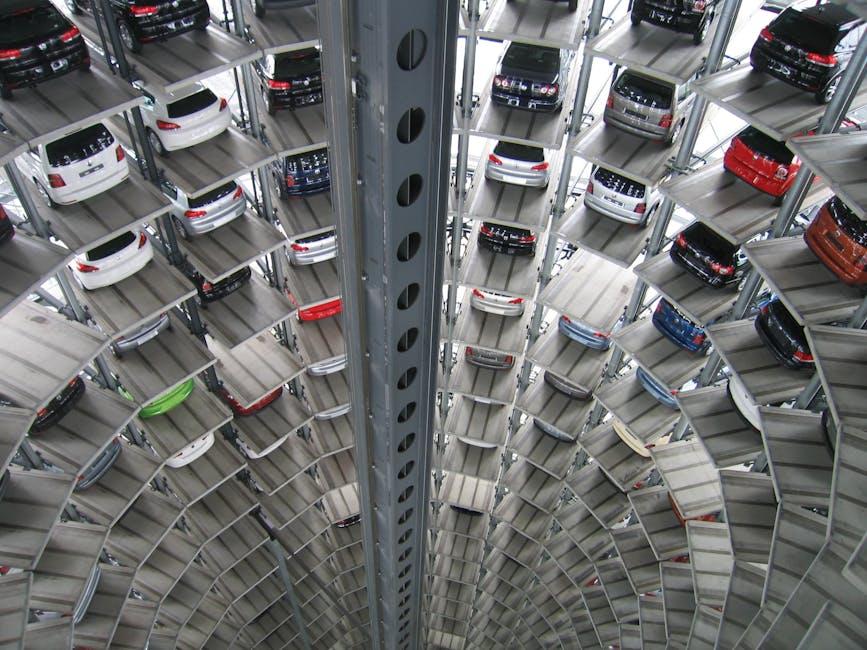
Understanding Common Causes of Reduced AC Efficiency
When your car’s AC suddenly doesn’t feel as refreshing, the culprit often lies in common issues that quietly chip away at its efficiency. Dirty or clogged air filters can significantly restrict airflow, causing the system to work harder while delivering less cool air. Another frequent offender is low refrigerant levels, which not only reduce cooling capacity but can also lead to compressor damage if ignored. Additionally, leaking refrigerant lines or worn-out components such as the AC compressor clutch can hamper performance, making it tougher for the system to maintain optimal temperatures inside your vehicle.
Understanding these factors is key to maintaining a smoothly running AC system. Here’s a quick overview of typical causes:
- Blocked condenser or radiator: Dirt and debris prevent efficient heat exchange.
- Faulty cooling fans: Without proper airflow, the system overheats.
- Thermostat issues: Incorrect temperature readings lead to inconsistent cooling.
- Electrical problems: Wiring faults disrupt system operations.
| Cause | Impact on AC | Recommended Action |
|---|---|---|
| Low Refrigerant | Reduced cooling power | Top off refrigerant promptly |
| Clogged Air Filters | Restricted airflow | Replace filters regularly |
| Dirty Condenser | Poor heat dissipation | Clean condenser fins carefully |
| Faulty Fans | Overheating system | Inspect and repair fans |
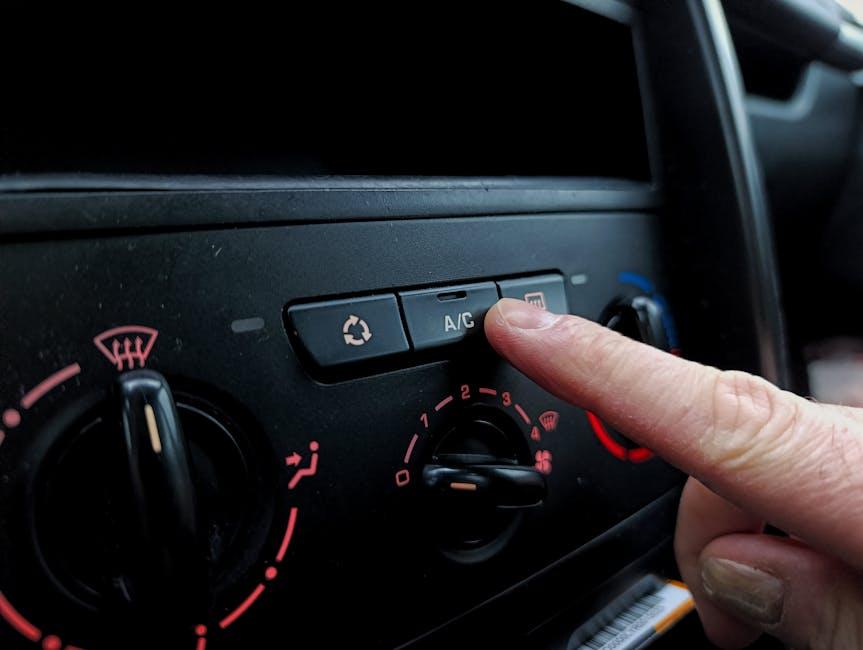
Selecting the Right Refrigerant and Checking for Leaks
Choosing the correct refrigerant for your vehicle is crucial to maintain optimal air conditioning performance and efficiency. Modern cars typically use refrigerants like R-134a or R-1234yf, each with specific environmental and functional benefits. Using the wrong type can lead to inefficient cooling or even damage the AC system. Always refer to your car manufacturer’s manual or consult a professional technician before refilling or switching refrigerants. Additionally, consider the refrigerant’s environmental impact—newer options offer reduced greenhouse effects, which aligns better with sustainable automotive care.
Once the proper refrigerant is in place, regular checks for leaks ensure the system operates flawlessly. Leaks not only reduce cooling efficiency but can also introduce contaminants and increase maintenance costs. A simple way to spot leaks is through electronic leak detectors or UV dye tests, often performed during routine AC service. Look for these common signs:
- Unusual hissing sounds near AC components
- Reduced cooling performance
- Visible oil residue around refrigerant lines and connections
| Leak Detection Method | Key Benefits | When to Use |
|---|---|---|
| Electronic Leak Detector | Fast and accurate | During routine maintenance |
| UV Dye Injection | Visual identification of leak points | If leak suspected but hard to find |
| Soap Bubble Test | Simple and low-cost | DIY minor inspections |

Optimizing Cabin Air Filters for Better Airflow
Maintaining the efficiency of your car’s cooling system often starts with a clean and well-optimized cabin air filter. A clogged filter restricts airflow, forcing the AC system to work harder and reducing its overall performance. To maximize airflow, replace your cabin filter every 12,000 to 15,000 miles or more frequently if you drive in dusty or polluted environments. When changing the filter, also inspect the filter housing for debris and ensure the seal is intact to prevent unfiltered air from bypassing the filter.
Consider these quick tips for optimal cabin air filter performance:
- Choose a high-quality filter with activated carbon to reduce odors and pollutants.
- Clean the vent openings regularly to avoid blockages that hinder air circulation.
- Ensure proper filter installation to avoid gaps or misalignment.
| Filter Type | Airflow Efficiency | Maintenance Frequency |
|---|---|---|
| Standard Paper | Good | Every 12K miles |
| Activated Carbon | Better | Every 10K miles |
| HEPA | Best | Every 8K miles |
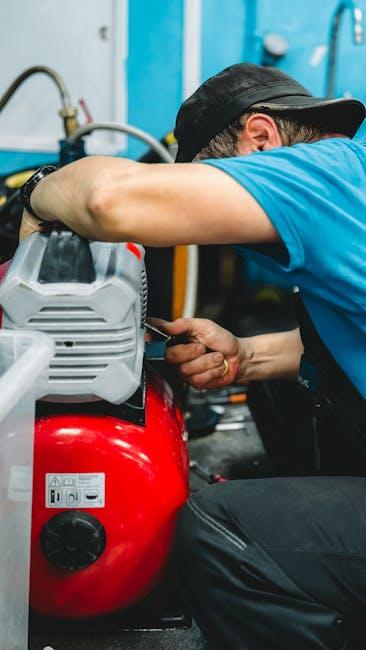
Maintaining the AC Compressor and Condenser for Peak Performance
Regular attention to your car’s AC compressor and condenser can dramatically enhance cooling efficiency and prolong system life. Start by inspecting the compressor clutch for any unusual noises or signs of wear, which may indicate internal issues. Keep the compressor clean and lubricated with the correct refrigerant oil to ensure smooth operation. Remember, using the proper type and amount of refrigerant is crucial — overfilling or undercharging can cause compressor strain or failure.
The condenser, often overlooked, plays a vital role in heat dissipation. To keep it functioning optimally, clean the fins regularly to avoid debris buildup that blocks airflow. A subtle yet effective method is to use a gentle spray of water or compressed air, taking care not to damage the delicate fins. Here’s a simple maintenance checklist to keep these components in top shape:
- Check refrigerant levels every 6 months
- Inspect compressor clutch for wear and tear
- Clean condenser fins biannually or more often in dusty areas
- Ensure proper lubricant use during recharge
- Monitor system pressure to avoid overload

Using Climate Control Settings to Maximize Cooling
Mastering your vehicle’s climate control settings can significantly enhance the efficiency of your air conditioning system. Start by switching to the recirculation mode instead of drawing in outside air; this allows the AC to cool the already chilled cabin air rather than trying to cool hot external air. Another powerful tip is to set the temperature manually rather than using the automatic mode, which sometimes runs the compressor less aggressively to save fuel. This hands-on approach ensures that the AC works continuously to bring the interior to a comfortable temperature quicker.
Balancing fan speed and temperature settings is another key to maximizing cooling without overworking your AC. Using the fan on a moderate setting combined with a slightly lower temperature setting leads to better air distribution and more consistent cooling. Below is a quick reference table showcasing optimal climate control combinations for various weather conditions:
| Outside Temp (°F) | Recommended Mode | Fan Speed | Temperature Setting (°F) |
|---|---|---|---|
| 85+ | Recirculation | High | 68-70 |
| 70-85 | Recirculation | Medium | 70-72 |
| Below 70 | Fresh Air | Low | 72-74 |
- Tip: Avoid setting temperatures too low, as it forces the compressor to work harder.
- Pro Trick: Pre-cool your car with the fan on recirculation for a few minutes before driving off.
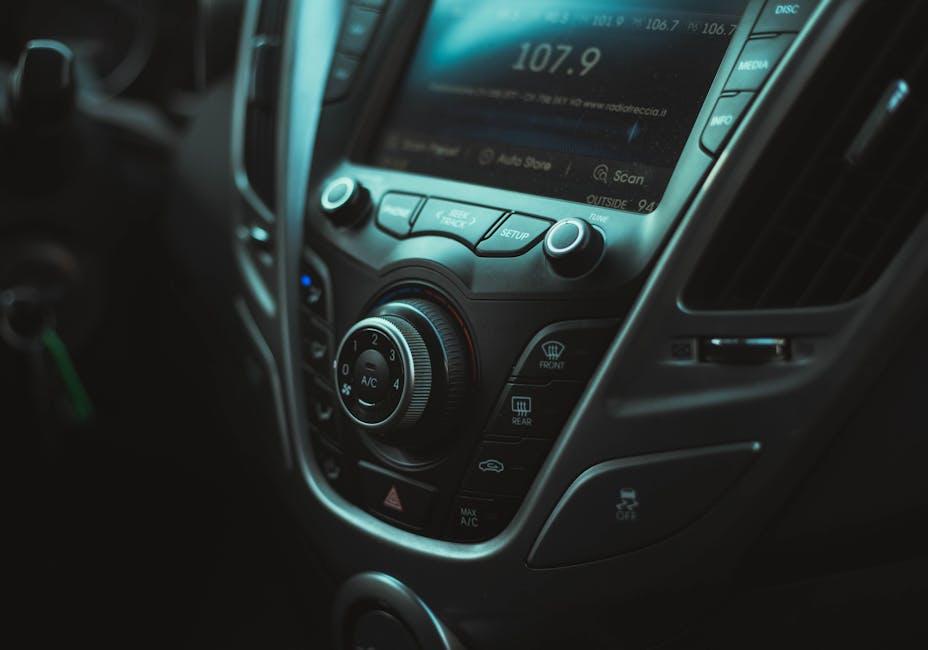
When to Seek Professional AC System Servicing
While minor tweaks can keep your car’s AC humming smoothly, certain warning signs should never be ignored. If you notice unusual noises, foul odors, or persistent weak airflow, it’s a clear signal that something deeper requires expert attention. Ignoring these symptoms can lead to more extensive damage, costing you time and money down the road. Professional diagnostics can also detect refrigerant leaks or electrical glitches that aren’t visible to the untrained eye, ensuring your AC system operates at peak efficiency.
Additionally, regular servicing intervals outlined in your car’s manual are crucial checkpoints. Skipping routine check-ups might mean missing out on preventative maintenance, like cleaning evaporator coils or recalibrating sensors. To help you decide when it’s time to visit a specialist, consider this quick reference table:
| Symptom | Recommended Action | Frequency |
|---|---|---|
| Warm air blowing | Refrigerant recharge or leak check | Immediately upon detection |
| Strange noises | Compressor and fan inspection | Within a week |
| Reduced cold air | Full system diagnostic | Every 12 months |
| Musty smell | Evaporator cleaning | At first sign |
Q&A
Q&A: Top Tips to Improve Car AC Performance
Q1: Why does my car’s AC lose its cool after a while?
A1: Over time, your car’s AC system can suffer from refrigerant leaks, clogged filters, or worn-out components. These issues reduce cooling efficiency, making the air less chilly. Regular maintenance helps keep the cold air flowing strong.
Q2: How often should I service my car’s AC system?
A2: Ideally, have your car’s AC checked once a year, especially before hot seasons. A professional tune-up can identify leaks, recharge refrigerant levels, and clean key parts to maintain optimal performance.
Q3: What simple things can I do myself to boost my AC’s cooling power?
A3: Parking in the shade, using sunshades, and cracking windows briefly before turning the AC on can reduce cabin heat. Also, regularly replace your cabin air filter to ensure good airflow and cleaner air inside.
Q4: Is it important to run my car’s AC in winter?
A4: Yes! Running the AC periodically during colder months helps keep the system lubricated and prevents seals from drying out, which can lead to leaks and poor performance when summer returns.
Q5: Can I top up the refrigerant myself?
A5: While some kits are available for DIY refrigerant topping, it’s best left to professionals. Overcharging or incorrect handling can damage the system or even cause safety hazards.
Q6: What signs indicate my car’s AC needs professional attention?
A6: Notice warm or weak airflow, strange smells, unusual noises, or visible leaks under the car? These are clear signs your AC system needs inspection and possibly repair.
Q7: How does proper use of the AC controls affect performance?
A7: Using the AC in recirculation mode helps cool the cabin faster by reusing cooled air. Avoid blasting full power immediately to ease wear on the system; instead, start on moderate settings and adjust as needed.
Q8: Can upgrading parts improve AC efficiency?
A8: Yes, replacing old compressors, fans, or evaporators with modern, efficient components can enhance cooling performance and lower energy consumption, but this typically requires professional assessment.
Q9: How does climate affect my car’s AC performance?
A9: Extremely hot or humid environments place additional stress on your AC. Staying proactive with maintenance and shading your vehicle can mitigate these effects and maintain comfort.
Q10: Any tips for extending the lifespan of my car’s AC system?
A10: Regular servicing, mindful use, protecting your car from heat, and addressing minor issues promptly are your best bets for keeping your car’s AC blowing cold for years to come.
In Conclusion
Keeping your car’s AC in top shape not only promises a cool and comfortable ride but also enhances overall driving enjoyment. By following these tips—regular maintenance, timely filter changes, and mindful usage—you can ensure your system hums efficiently through every season. So next time the temperature rises, you’ll be ready to beat the heat with ease and confidence, turning every journey into a refreshing escape. Stay cool, stay comfortable!

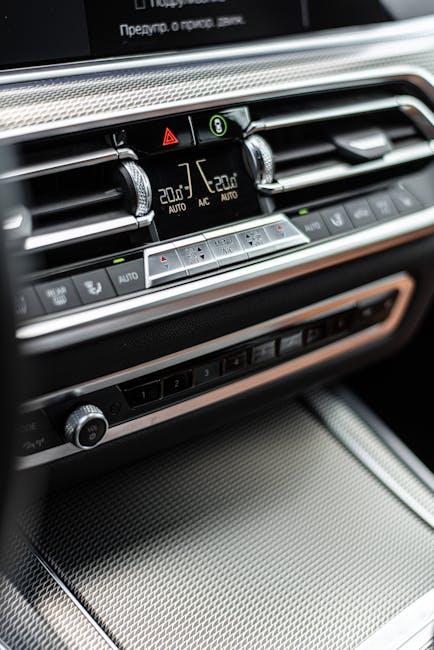
2 Comments
9csjyk
9csjyk